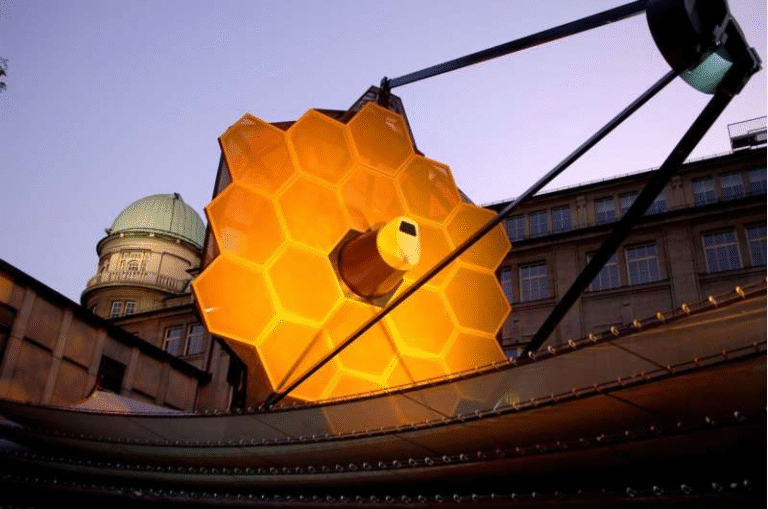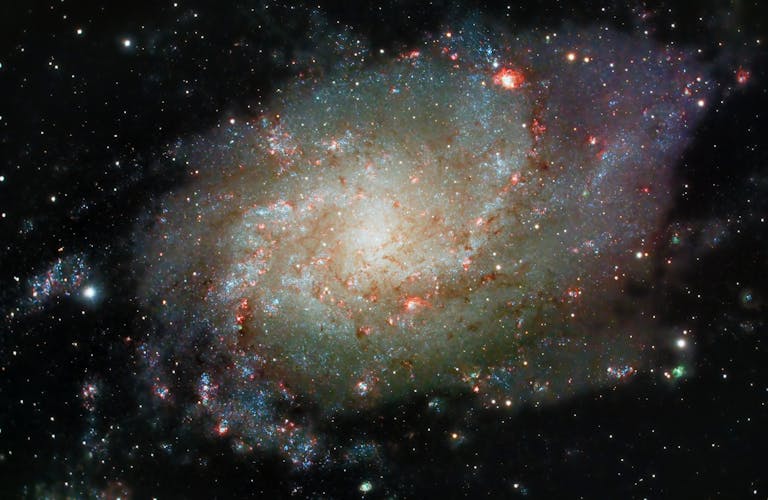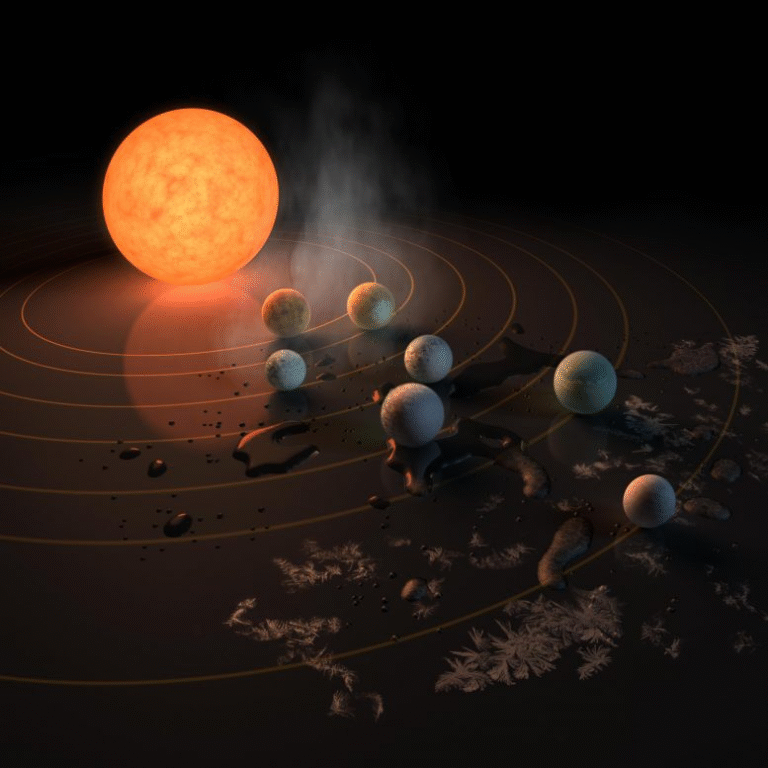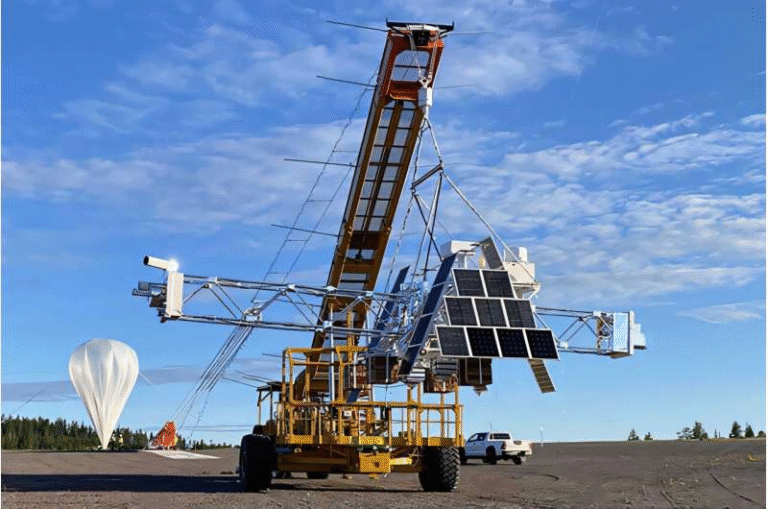The Brightest and Most Distant Black Hole Flare Ever Seen Stuns Astronomers
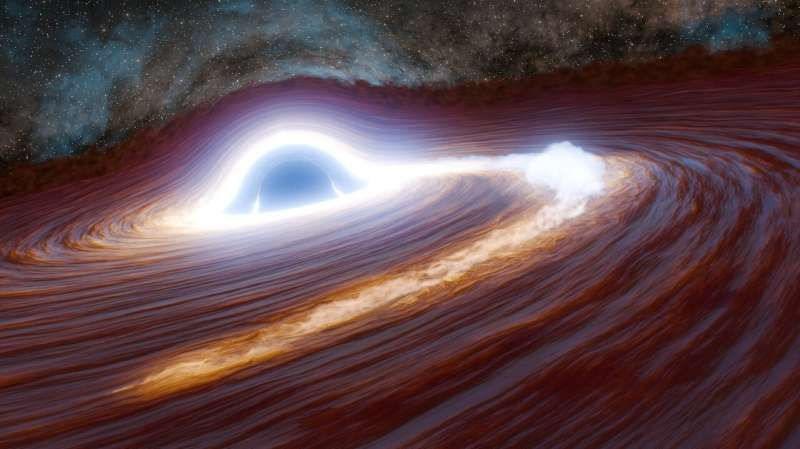
Astronomers have witnessed something truly extraordinary—a black hole flare so bright, so powerful, and so far away that it has set a new cosmic record. The event, designated J2245+3743, occurred roughly 10 billion light-years from Earth, making it both the most luminous and most distant black hole flare ever observed. Detected by the Zwicky Transient Facility (ZTF) at Caltech’s Palomar Observatory, the flare is believed to be the result of a supermassive black hole devouring a massive star at the center of a distant galaxy.
A Cosmic Event Like No Other
The flare, first spotted in 2018, quickly became the center of attention among astronomers monitoring transient cosmic phenomena. It brightened by a factor of 40 over a few months and reached a peak luminosity equivalent to 10 trillion times the brightness of our Sun—about 30 times brighter than any black hole flare ever recorded before.
At the heart of this incredible event lies a supermassive black hole estimated to be 500 million times more massive than the Sun. It sits within an active galactic nucleus (AGN), a region where the black hole feeds on surrounding matter and radiates immense energy. This feeding process produces intense light and radiation, but even among AGNs, J2245+3743 stands out for its unprecedented brilliance.
The flare’s brightness and distance make it a window into the early universe. Since light takes time to travel, astronomers observing J2245+3743 today are essentially looking 10 billion years into the past, to a time when the universe was still relatively young.
What Caused the Flare?
Researchers at Caltech, in collaboration with astronomers from the City University of New York, the American Museum of Natural History, and other institutions, spent years analyzing data to determine what could have produced such a spectacular outburst. After examining and ruling out several possibilities—including beamed emissions, supernova explosions, and ordinary AGN flares—they concluded that this event is most likely a tidal disruption event (TDE).
A TDE happens when a star wanders too close to a black hole and is ripped apart by its immense gravitational pull. The shredded stellar material spirals around the black hole, forming a bright, hot disk that releases vast amounts of light and energy. In the case of J2245+3743, scientists estimate the doomed star was at least 30 times the mass of the Sun—a truly giant star by cosmic standards.
What makes this event especially fascinating is that it occurred inside an already active AGN. Normally, AGNs have so much ongoing activity that it’s difficult to detect an additional flare from a single event like a TDE. However, J2245+3743 was so luminous that it managed to outshine the surrounding AGN’s normal emissions, allowing scientists to isolate and study it in detail.
Confirming the Record-Breaking Brightness
When the flare was first identified, astronomers used the 200-inch Hale Telescope at Palomar Observatory to capture a spectrum of its light. Initially, the data didn’t seem to reveal anything particularly unusual. But years later, as the flare began to fade more slowly than expected, follow-up observations with the W. M. Keck Observatory in Hawai‘i confirmed that the event was far more powerful than anyone had realized.
To ensure the brightness wasn’t caused by a jet of light aimed directly at Earth—a common cause of apparent luminosity boosts—scientists examined infrared data from NASA’s Wide-field Infrared Survey Explorer (WISE). The analysis ruled out beaming effects, confirming that J2245+3743 truly emitted light in all directions at record-setting levels.
The total amount of energy released is staggering. If you converted the entire mass of the Sun into pure energy using Einstein’s equation E = mc², it would roughly equal the total energy emitted by this flare over the time it has been observed.
The Role of Time and Distance
Because the event is so distant, astronomers are observing it through a lens of cosmological time dilation. In simple terms, time appears to move more slowly at that faraway location due to the expansion of the universe. As the light from the flare travels billions of years to reach us, it stretches in wavelength and duration.
This means that what astronomers have been observing over seven years on Earth corresponds to only about two years of real time at the site of the black hole. In effect, we are watching the event unfold in slow motion, providing a rare opportunity to study how a black hole consumes a star over an extended period.
Comparing It to Other Known Events
The previous record holder for the largest known tidal disruption event was a phenomenon nicknamed Scary Barbie, also discovered by ZTF in 2020. That flare was impressive in its own right but was about 30 times weaker than J2245+3743 and involved a much smaller star—between three and ten solar masses.
This new event dwarfs it in every respect. The sheer scale of the star, the energy released, and the distance from Earth combine to make J2245+3743 an astronomical landmark—the kind of discovery that redefines what scientists thought was possible for black hole activity.
Why This Discovery Matters
The detection of such a massive flare has huge implications for our understanding of black holes, galaxies, and star formation in extreme environments.
First, it supports the idea that very large stars can form within the disks of AGNs. These regions are rich in gas and dust, and under the right conditions, stars can grow by accumulating material from the surrounding disk. Once formed, these massive stars face a perilous existence—eventually being pulled apart by the black hole that helped create them.
Second, the event demonstrates how long-term sky surveys like ZTF are crucial for catching rare phenomena. Because the ZTF has been monitoring the sky continuously for seven years, astronomers could track how the flare evolved over time, study its brightness fluctuations, and understand the physics behind it.
Finally, this discovery opens the door to identifying similar events in the future. Upcoming observatories like the Vera C. Rubin Observatory, operated by the NSF and the U.S. Department of Energy, will have the capability to detect more distant and luminous TDEs, offering new insights into how black holes grow and interact with their surroundings.
The Bigger Picture: What Are Tidal Disruption Events?
A tidal disruption event occurs when the gravitational pull of a black hole exceeds the structural integrity of a nearby star. The star is torn apart, and part of its material is ejected into space while the rest forms an accretion disk around the black hole. As this material heats up and spirals inward, it emits enormous amounts of light, often outshining the combined luminosity of entire galaxies for a short period.
TDEs are relatively rare—only about a hundred have been observed so far. Most occur around quiet black holes that aren’t actively feeding, which makes this discovery unusual. J2245+3743’s black hole was already active as part of an AGN, yet it still managed to produce a TDE bright enough to dominate the galaxy’s output.
Such events help astronomers probe regions of space that are otherwise impossible to study directly. By analyzing the light from a TDE, scientists can learn about the mass, spin, and feeding habits of the black hole, as well as the composition of the disrupted star.
Looking Ahead
Even though the flare is gradually fading, astronomers continue to monitor it. Because of its extreme brightness and distance, it will likely remain visible for years to come. Researchers hope that continued observations will reveal new details about how the flare evolves and how the black hole finishes consuming its stellar meal—like watching a cosmic feeding frenzy unfold frame by frame.
As telescopes become more advanced and sky surveys more comprehensive, discoveries like J2245+3743 remind us that the universe still has plenty of surprises left to share. Somewhere out there, countless other stars may be meeting their end in the jaws of black holes, their light traveling billions of years to tell their final story.
Research Paper: An Extremely Luminous Flare Recorded from a Supermassive Black Hole – Nature Astronomy (2025)
